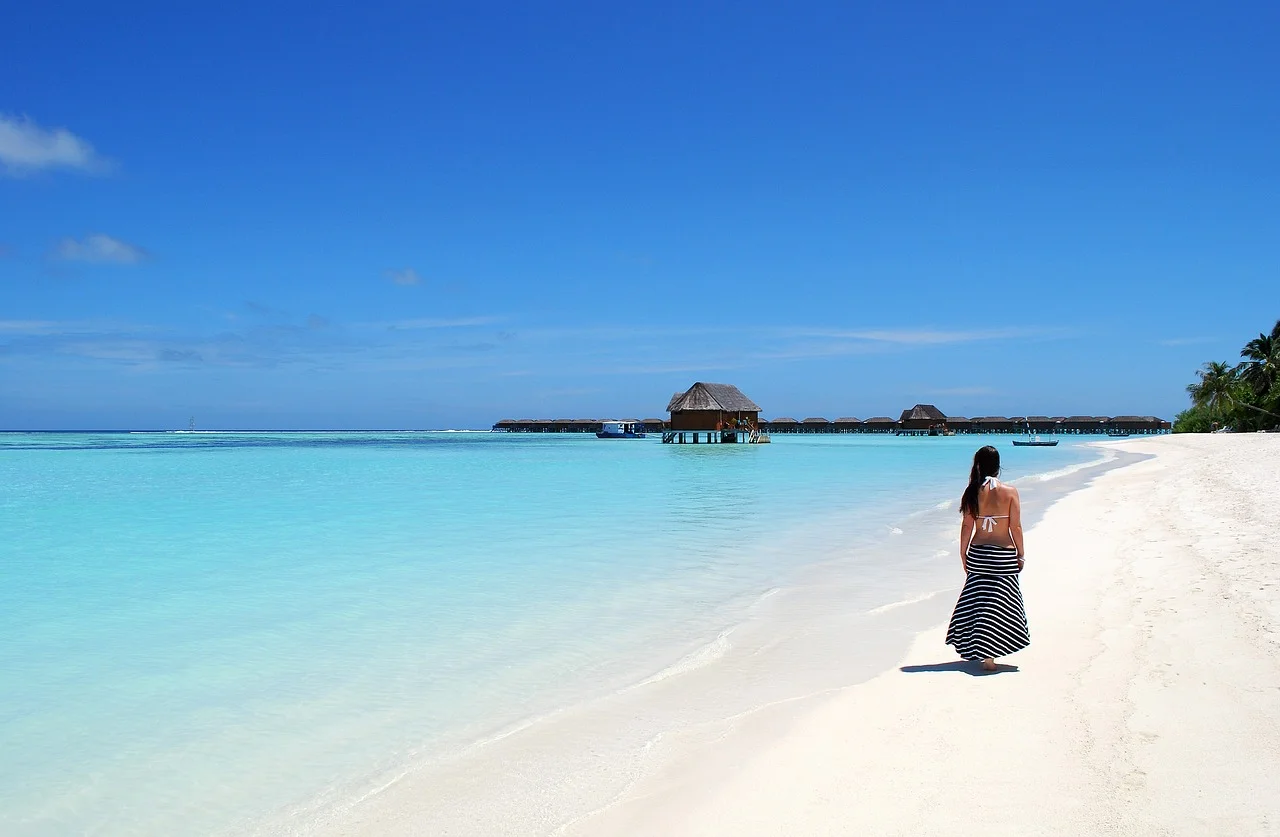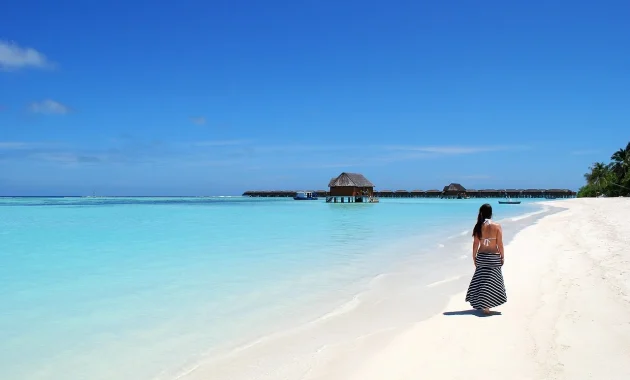
The Maldives, a breathtaking island paradise, is not only renowned for its crystal-clear waters and luxurious resorts but also for its rich cultural heritage that dates back over a thousand years. The traditions, customs, and history of the Maldives have been shaped by diverse influences from Africa, the Middle East, and Asia, resulting in a unique blend of cultures that make the Maldivian identity truly distinctive. Exploring the cultural aspects of this island nation offers a deeper understanding of its people, their way of life, and their deep-rooted traditions.
A Glimpse into the History of the Maldives
The history of the Maldives is deeply entwined with seafaring, trade, and migration. Situated along major sea routes, the Maldives has long been a melting pot of various cultures and ethnicities. It is believed that the first settlers arrived from Sri Lanka and southern India, followed by Arab traders who brought Islam to the islands in the 12th century. Islam has since become the dominant religion in the Maldives, profoundly influencing its cultural practices, festivals, and daily life.
Historically, the Maldives was ruled by a series of sultanates, and the royal lineage played a key role in shaping the country’s political and social structures. The advent of European colonizers in the Indian Ocean also left its mark, but the Maldivian people managed to preserve their unique traditions and heritage, which remain at the core of their identity today.
Language and Oral Tradition: The Backbone of Maldivian Culture
One of the most important aspects of Maldivian culture is the Dhivehi language, which is spoken by almost all Maldivians. Dhivehi belongs to the Indo-Aryan family of languages and shares some linguistic similarities with Sinhalese, the language of Sri Lanka. The oral tradition in the Maldives has been crucial in preserving its history and cultural knowledge. For centuries, stories, songs, and folklore have been passed down from generation to generation, serving as an important vehicle for the transmission of cultural values.
A distinct form of storytelling, known as Raivaru, is central to Maldivian oral tradition. These poetic compositions often convey tales of love, sorrow, and the beauty of island life, and are usually performed in a rhythmic and melodic manner, capturing the emotions and experiences of the Maldivian people.
Religious Practices and Festivals
The Maldives is a predominantly Muslim country, and Islam plays a significant role in shaping the daily lives of the people. The Maldivian calendar is marked by several important Islamic festivals, which are celebrated with much enthusiasm and devotion. Ramadan, known as ‘Rivvaru’ in the Maldives, is one of the most important religious events of the year. During this month of fasting, Maldivians partake in traditional iftar meals and engage in special prayers at the mosque.
Another significant event is Eid-ul-Fitr, which marks the end of Ramadan. This festival is celebrated with family gatherings, feasts, and various forms of entertainment. The Maahefun festival is another pre-Ramadan celebration unique to the Maldives, where families and friends come together to share meals and prepare for the month of fasting. The Eid-ul-Adha festival is also widely observed and includes prayers, sacrifices, and communal meals.
Religious festivals provide a glimpse into the strong sense of community and spiritual devotion that is characteristic of Maldivian society. Mosques, which serve as focal points for religious and social gatherings, can be found throughout the islands. Hukuru Miskiy, or the Old Friday Mosque, is one of the most significant mosques in the Maldives and stands as a testament to the nation’s rich Islamic architectural heritage.
Traditional Clothing and Dress Codes
Traditional clothing in the Maldives reflects both Islamic customs and the tropical climate of the islands. Maldivian men typically wear a sarong known as the ‘Mundu’, paired with a long-sleeved shirt. Women’s traditional attire is the ‘Libaas’, a long dress often adorned with intricate embroidery and gold jewelry. For formal occasions, both men and women wear more elaborately designed versions of these garments.

Islamic principles of modesty are observed in Maldivian dress codes, especially in public spaces, although the dress code can vary depending on the region and context. On the more touristic islands, casual beachwear is common, but visitors are expected to dress more modestly when visiting local communities or religious sites.
Maldivian Cuisine: A Fusion of Flavors
Maldivian cuisine is a reflection of the island’s geographical location and history. As a maritime nation, the Maldives has always relied heavily on the sea for sustenance. Fish, particularly tuna, forms the backbone of Maldivian cuisine, along with coconut and rice. The use of spices such as curry leaves, chili, and cumin reflects South Asian influences.
A traditional Maldivian breakfast often consists of Mas Huni, a dish made from shredded tuna, coconut, onions, and chili, served with Roshi, a type of flatbread. Other popular dishes include Garudhiya, a fish soup, and Fihunu Mas, grilled fish marinated with chili paste. Maldivians also enjoy a variety of short eats, or snacks, known as Hedhikaa, which are often served with tea.
Due to its historical trade links, Maldivian cuisine has also absorbed influences from Indian, Sri Lankan, and Arab culinary traditions, resulting in a unique fusion of flavors that sets it apart from other island cuisines in the region.
The Role of Music and Dance in Maldivian Culture
Music and dance play an integral role in Maldivian cultural expressions. Bodu Beru, the traditional Maldivian drumming and dance form, is perhaps the most famous cultural performance in the Maldives. Derived from East African influences, Bodu Beru is performed with large drums, accompanied by rhythmic chants and energetic dance movements. It is often performed during special occasions, festivals, and public gatherings, and serves as a lively representation of Maldivian culture.
Another traditional performance is Thaara, a form of rhythmic group singing believed to have been introduced by Arab traders. Thaara is performed in a seated position, with participants clapping and singing in unison to the beats of drums.
Maldivian folk songs, known as Faanu Beyvaa, also play a role in cultural festivities and are often accompanied by traditional dances. These performances reflect the joy, vitality, and communal spirit of the Maldivian people.
Craftsmanship and Traditional Arts
Maldivian craftsmanship is another vital aspect of the country’s heritage. The lacquerware industry, known as Liye Laajehun, produces intricate lacquered boxes, bowls, and other decorative items, a craft that has been passed down through generations. Maldivians are also known for their mat weaving skills, creating beautiful mats from reeds and palm leaves, often dyed in vibrant colors. These mats are traditionally used in homes as floor coverings or for prayer.
Another prominent art form is the Dhoni boat building, a centuries-old tradition. The Dhoni, a wooden sailboat, has been an essential mode of transportation and fishing for Maldivians for generations. These boats are handcrafted, and the skill involved in their construction is considered a valuable cultural tradition.
Preserving the Cultural Heritage of the Maldives
In recent years, the government of the Maldives has made efforts to preserve its cultural heritage, recognizing its importance not only for the identity of its people but also for tourism. Cultural festivals, museums, and heritage sites play a critical role in maintaining the connection between the past and the present. The National Museum of the Maldives in Malé showcases artifacts, royal antiquities, and historical documents that provide insights into the island’s rich history.
As the Maldives continues to grow as a popular tourist destination, there is a renewed focus on ensuring that its cultural heritage is not overshadowed by modernity and development. Visitors to the Maldives are encouraged to explore not only the natural beauty of the islands but also the deep cultural roots that make the Maldives a truly unique destination.